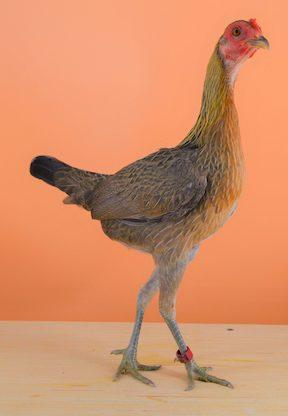
Lemon Blue Modern game birds make for a welcome addition to most backyard flocks. As an American Bantam Association recognized variety since 1874, these birds are tame and inquisitive. They are known for their long, thin legs and neck with a pinched tight “whip” tail and upright body stature.
Lemon Blues are a variety of modern game bird that originated in England in the mid-1800’s as the result of breeding Old English Games with Malays. The idea was to create a better show bird, as cockfighting was fast becoming illegal while poultry shows began to explode in popularity.
Their popularity peaked in the 1900’s, and many varieties are currently classified as “at-risk” in both the U.S. and U.K. Today, the breed is undergoing a bit of a revival as more backyard chicken owners discover their appeal.
While these birds were technically not bred for fighting, they are still classified as game chickens. Thus, Moderns have closely fitting feathers around their neck area, known as hackles. Tight hackles pose an advantage in cockfights, as it makes it harder for their opponents to grab onto their necks.
Today, you can find Moderns in more than a dozen color variations. For Lemon Blues, the comb, wattles, and earlobes are a deep mulberry, while the plumage is lemon-blue, and the shanks and toes look black.
The ideal Modern Game show bird should have a slender body that resembles a flat iron when viewed from above, a short back, long neck, fine tail, and an upright posture.
Modern Game chickens have a noisy temperament and need space to roam. While individuals may lean more towards the aggressive side, the breed as a whole tends to be friendly and curious. The hens are notoriously broody and make excellent mothers. Backyard owners can even use these birds to hatch eggs from other varieties.
This breed grows slowly and isn’t winter hardy. They will need insulated or heated coops to survive cold temperatures.
Contact: FARM SHOW Followup, Modern Game Bantam Club of America (mgbcasecretary@outlook.com; www.mgbca.org).
